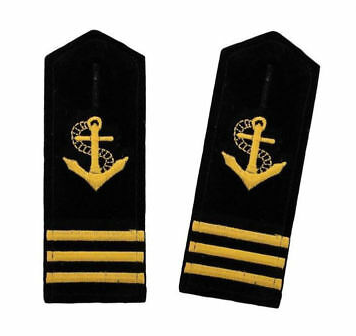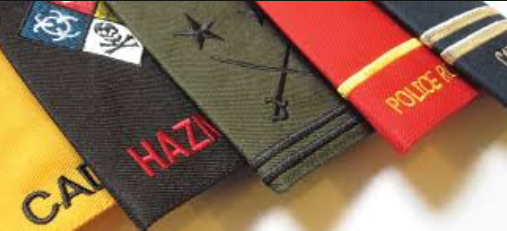Epaulet is a kind of elaborate shoulder piece or adornment utilized as an emblem of rank by military and different associations. In the French and different armed forces, epaulets are additionally worn by all positions of world-class or stylized units when on the procession. It might bear rank or another emblem, and ought not to be mistaken for a shoulder mark - additionally called a shoulder board, rank slide, or slip-on - a level material sleeve worn on the shoulder lash of a uniform (despite the fact that the two terms are regularly utilized reciprocally).
Wikipedia link: https://en.wikipedia.org/wiki/Epaulette
Epaulets are attached to the shoulder by a shoulder lash or passenten, a little tie parallel to the shoulder crease, and the catch close to the neckline, or by bands on the underside of the epaulet going through gaps in the shoulder of the coat. Conversationally, any shoulder str''''aps with imprints are likewise called epaulets. The arrangement of the epaulet, its shading and the length and distance across of its bullion periphery are utilized to mean the wearer's position. At the join of the periphery and the shoulder, the piece is regularly a metal piece like a bow. Albeit initially worn in the field, epaulets are currently regularly constrained to dress or stately military outfits.
History Bullion Embroidery Epaulets:
Epaulets look to some extent like the shoulder pteruges of antiquated Roman military ensembles. Notwithstanding, their immediate birthplace lies in the lots of strips worn on the shoulders of military coats toward the part of the bargain century, which were most beautiful and in part planned to avoid shoulder belts from slipping. These strips were integrated with a bunch which left the bordered end free. This built up the essential structure of the epaulet as it advanced through the eighteenth and nineteenth hundreds of years.
reference link:https://handembroideryuk.co.uk/white-bullion-embroidery-epaulettes-pair

From the eighteenth century on, epaulets were utilized in the French and different armed forces to show rank. The position of an official could be dictated by whether an epaulet was worn on the left shoulder, the correct shoulder or on both. Later a "counter-epaulet" (with no periphery) was worn on the contrary shoulder of the individuals who wore just a solitary epaulet. Epaulets were made in silver or gold for officials, and in the material of different hues for the enrolled men of different arms. Certain classes of rangers wore adaptable metal epaulets alluded to as shoulder scales, seldom worn on the field.
By the mid-eighteenth century, epaulets had turned into the distinctive component of the charged position. This drove officials of military units still without epaulets to the request for the privilege to wear epaulets, to guarantee that their status would be perceived. During the Napoleonic Wars and in this way through the nineteenth century, grenadiers, light infantry, voltigeurs and other authority classifications of infantry in numerous European armed forces wore material epaulets with fleece borders in different hues to recognize them from conventional line infantry. "Flying big guns" wore "wings", like an epaulet yet with just a touch of periphery outwardly, which coordinated the shoulder crease. Substantial big guns were little balls speaking to ammo on their shoulders."
A transitional structure in certain administrations, for example, the Russian Army, is the shoulder board, which neither has a periphery nor stretches out past the shoulder crease. This started during the nineteenth century as a rearranged variant for administration wear of the overwhelming and obvious full dress epaulet with bullion borders.
Shoulder characteristic of a contemporary British OG (Olive Green) pullover with RAF Sergeant emblem. The shoulder lash is connected with snare and-circle clasp.
Epaulets originally showed up on British regalia in the second 50% of the eighteenth century. The epaulet was formally fused into Royal Navy uniform guidelines in 1795, albeit a few officials wore them before this date. Under this framework, banner officials wore silver stars on their epaulets to recognize their positions. A chief with at any rate three years' status had two plain epaulets, while a lesser skipper wore one on the correct shoulder and a leader one on the left.
reference link:https://handembroideryuk.co.uk/white-bullion-embroidery-epaulettes-pair

In 1855, armed forces officials' enormous, gold-bordered epaulets were abrogated and supplanted by an improved proportionate authoritatively known as turned shoulder-strings. These were commonly worn with full dress regalia until 1939. Maritime officials held the memorable bordered epaulets for a full dress during this period.
English mounted force on dynamic administration in Sudan (1898) and during the Boer War (1899–1902) at times wore epaulets made of chainmail to secure against sword blows arriving on the shoulder. The blue "Number 1 dress" garbs of some British mounted force regiments and yeomanry units still hold this element in the decorative silvered structure.
With the presentation of the khaki administration dress in 1902, the British Army quit wearing epaulets in the field, changing to rank badge weaved on the sleeves of the uniform coat. During World War I, this was found to make officials an objective for expert sharpshooters, so the emblem was often moved to the shoulder ties, where it was less obvious.
The current multi-landscape design (MTP) and the more seasoned battle uniform (DPM) have the symbol earlier utilized on shoulder lashes showed on a solitary tie worn vertically in the focal point of the chest. Prior DPM regalia had shoulder lashes on the shoulders, however just officials wore rank on rank slides which joined to these ties, different positions wore rank on the upper right sleeve as of now however later on regimental titles were worn on the rank slides. This training proceeded into later designs where rank was worn on the chest, the rank was likewise included.

